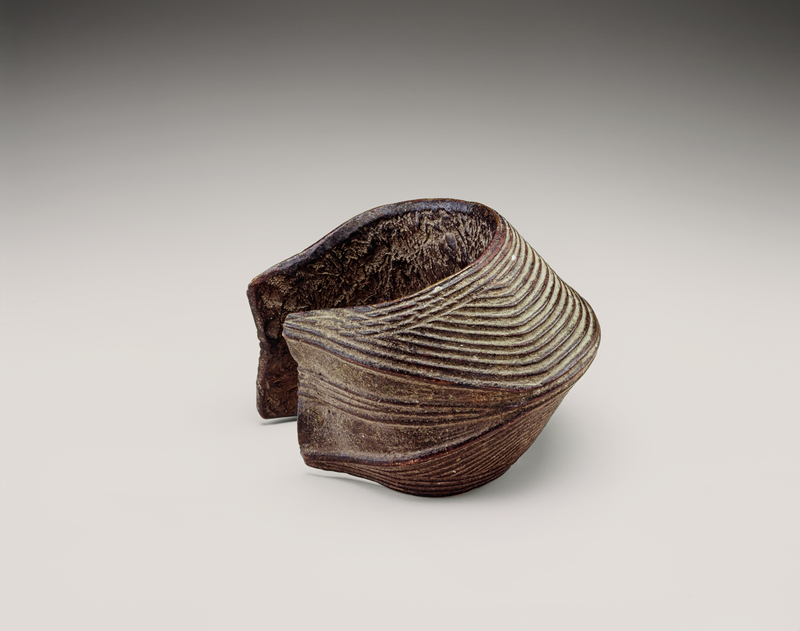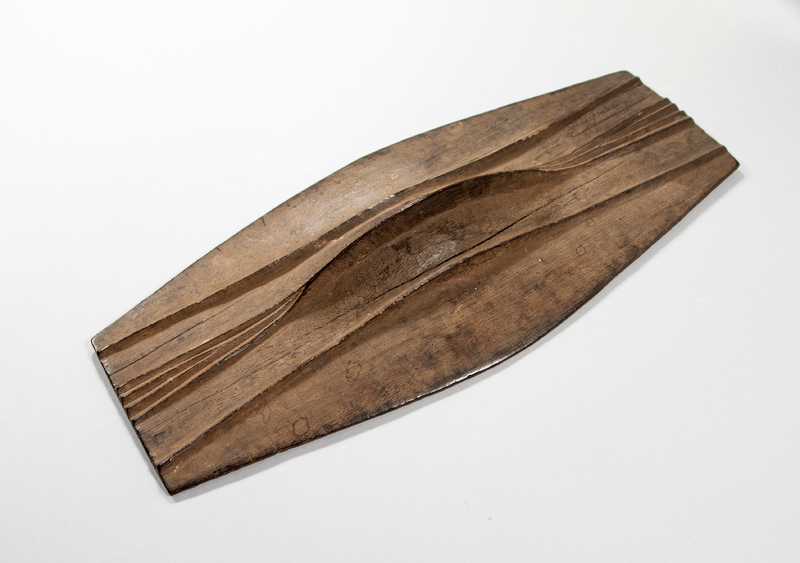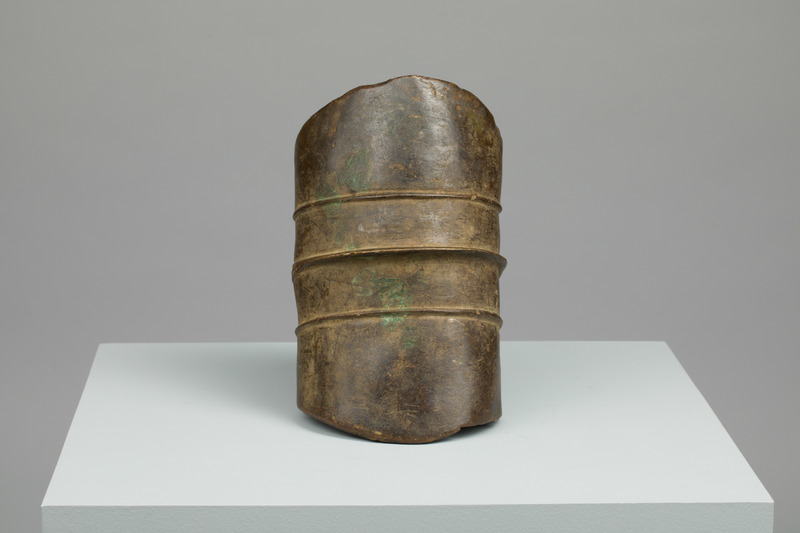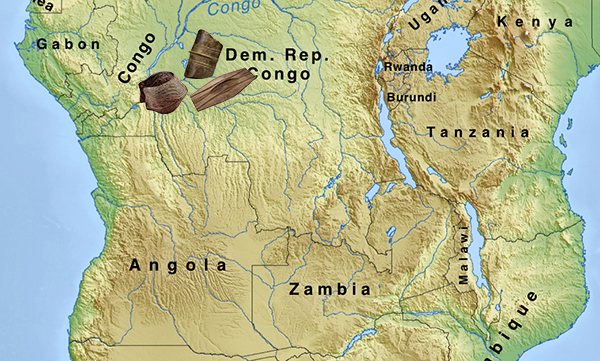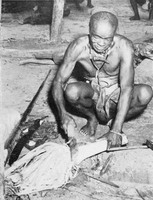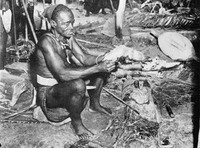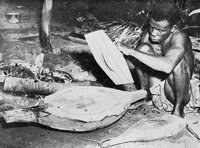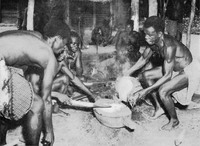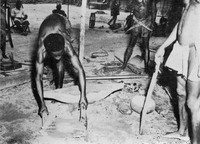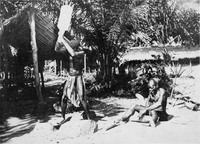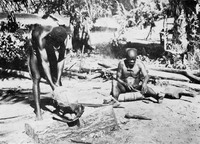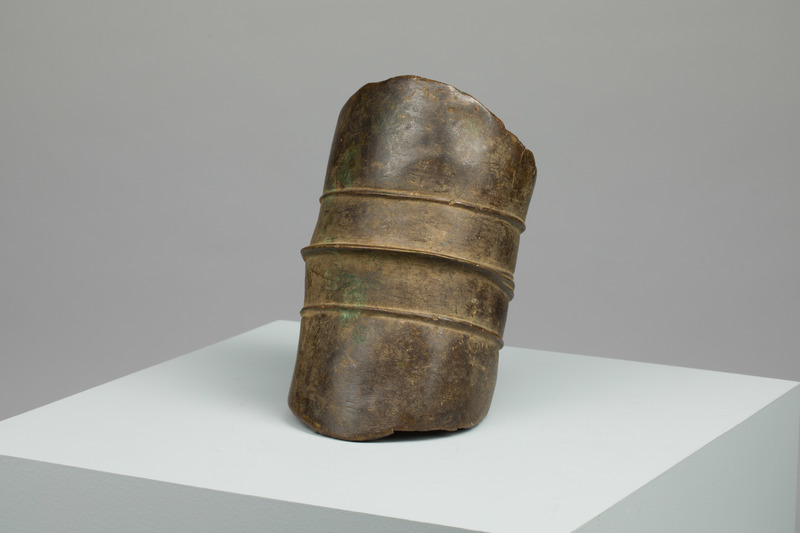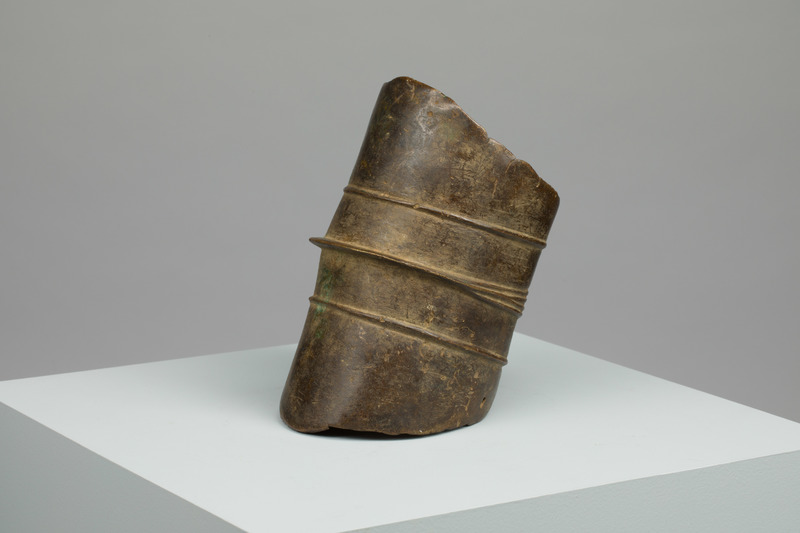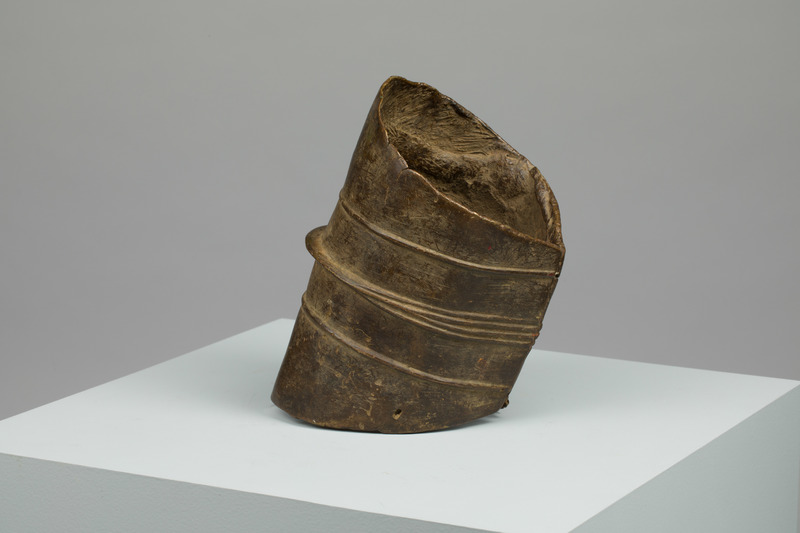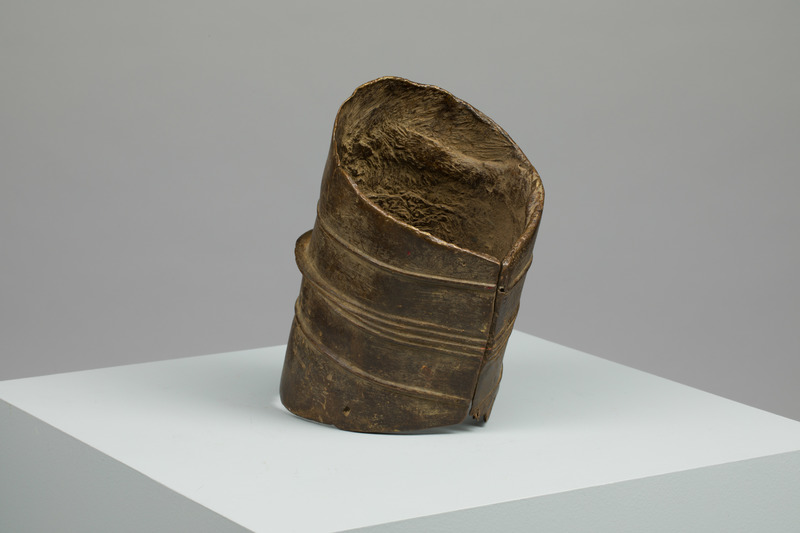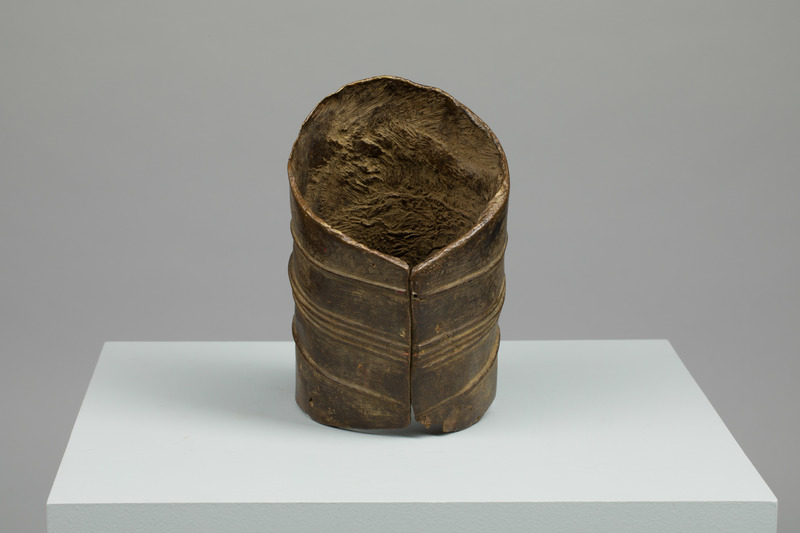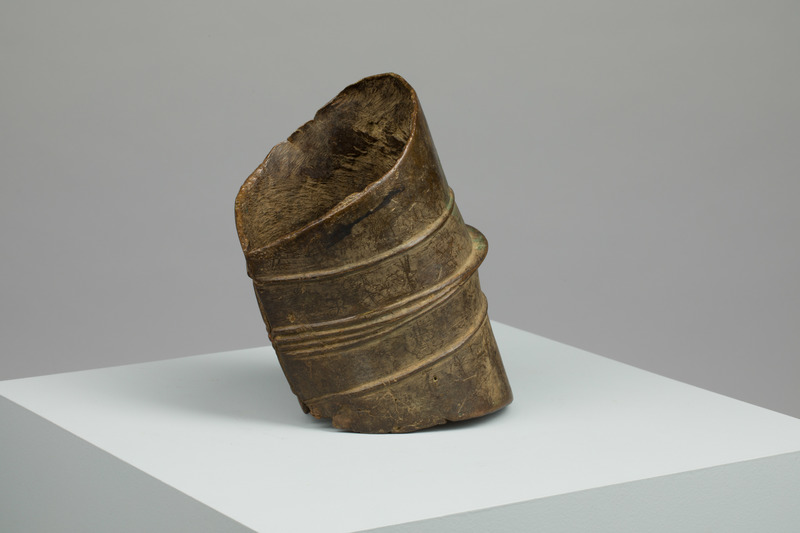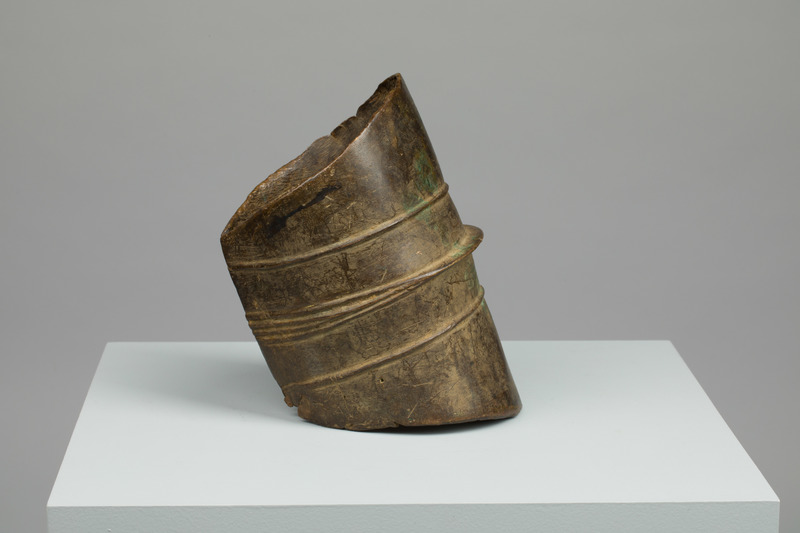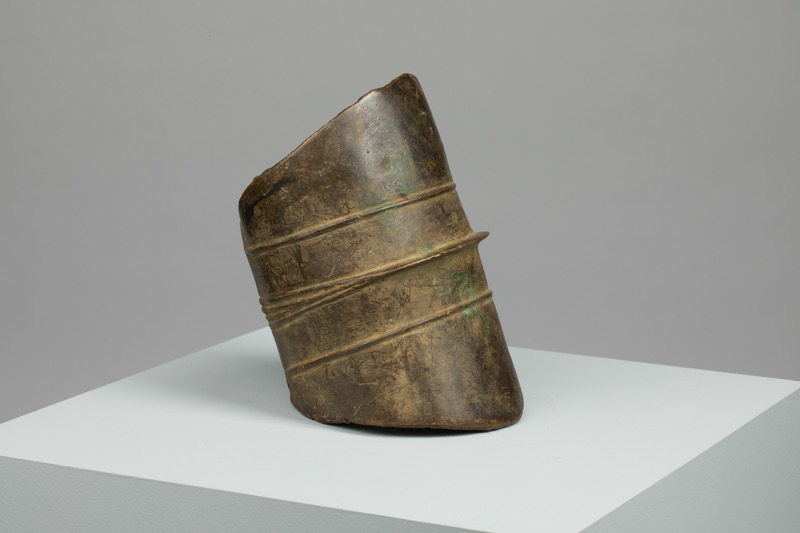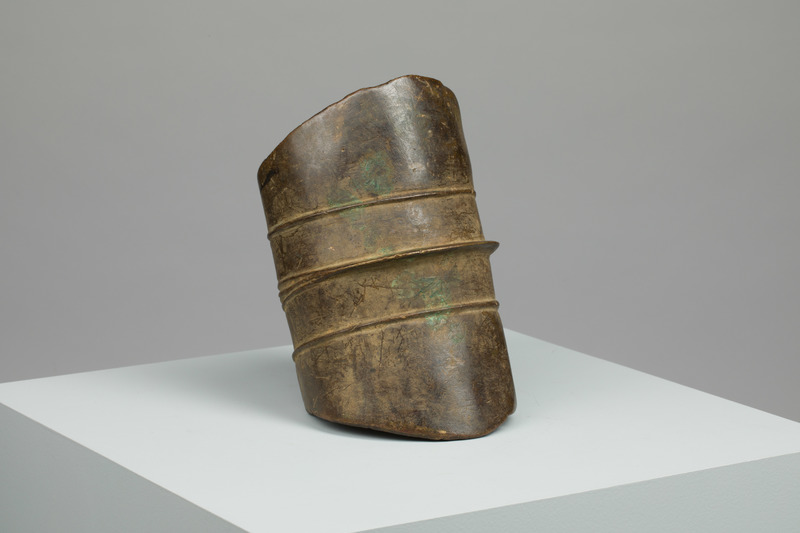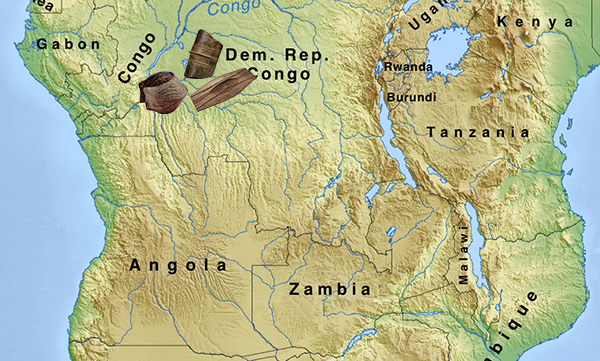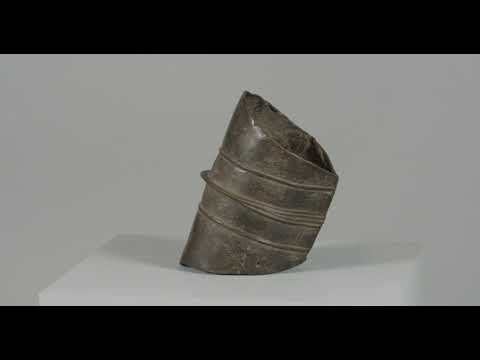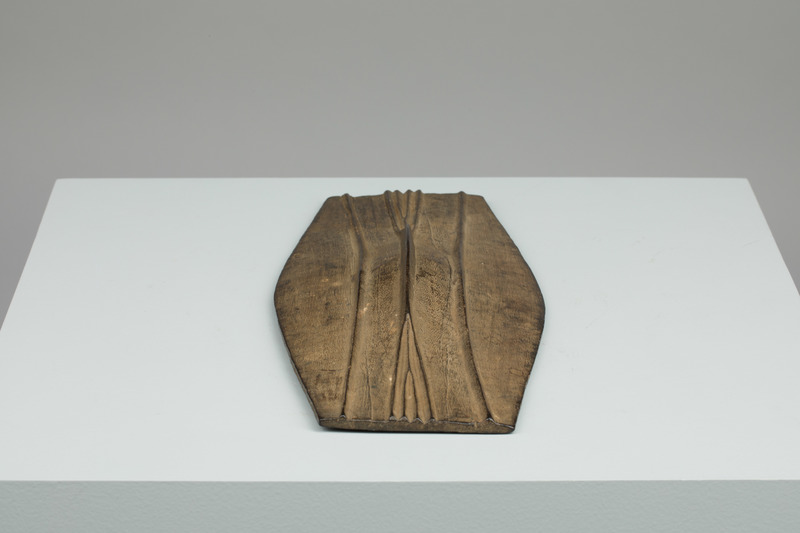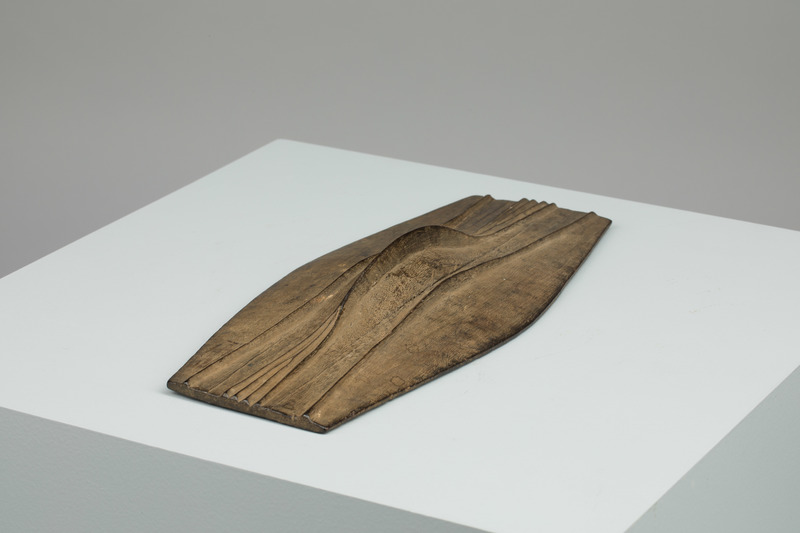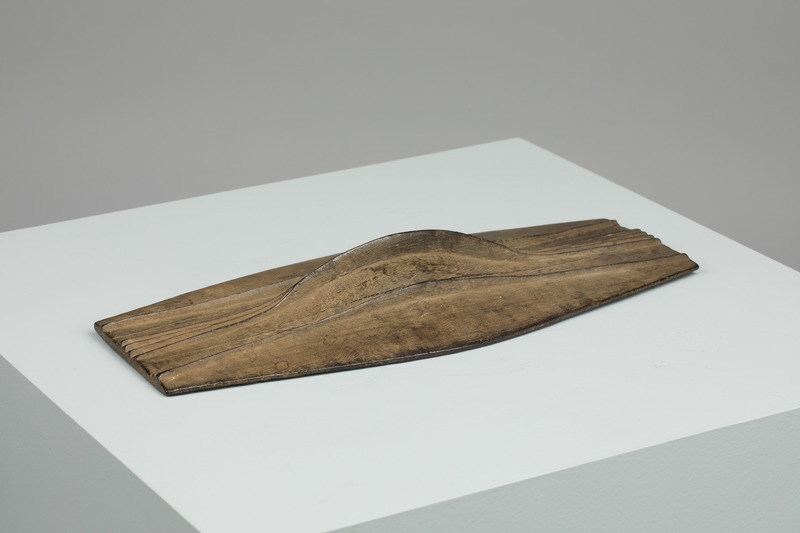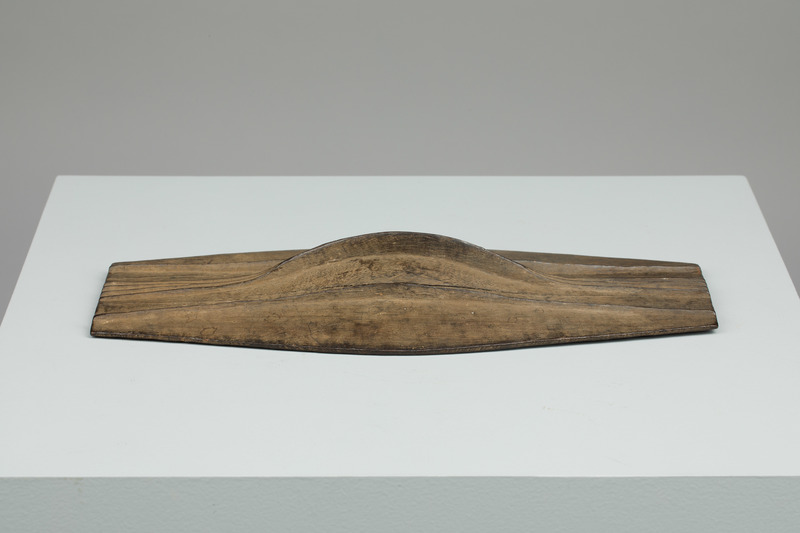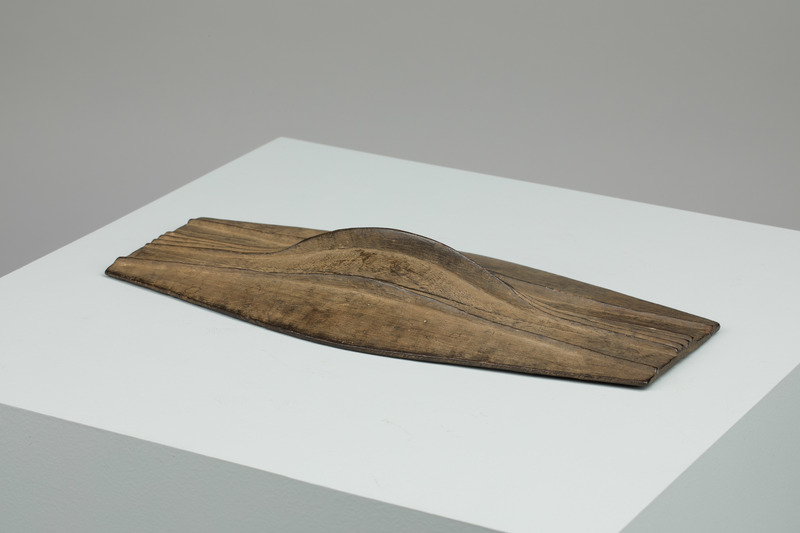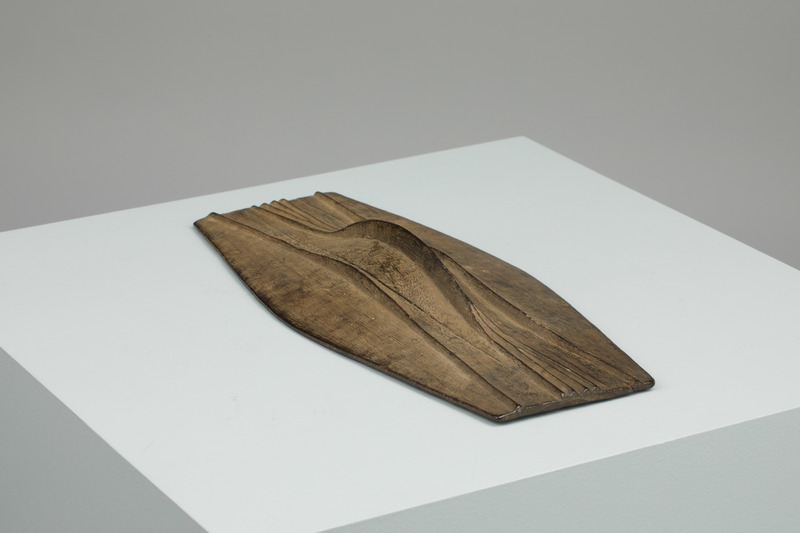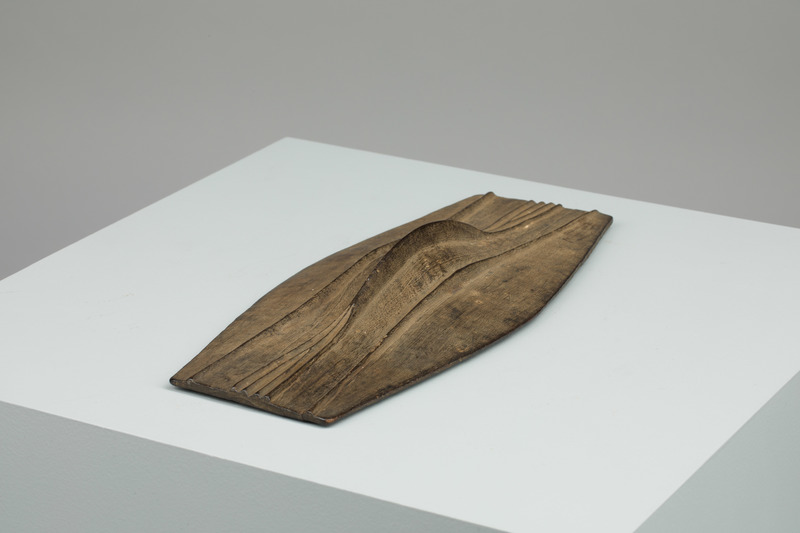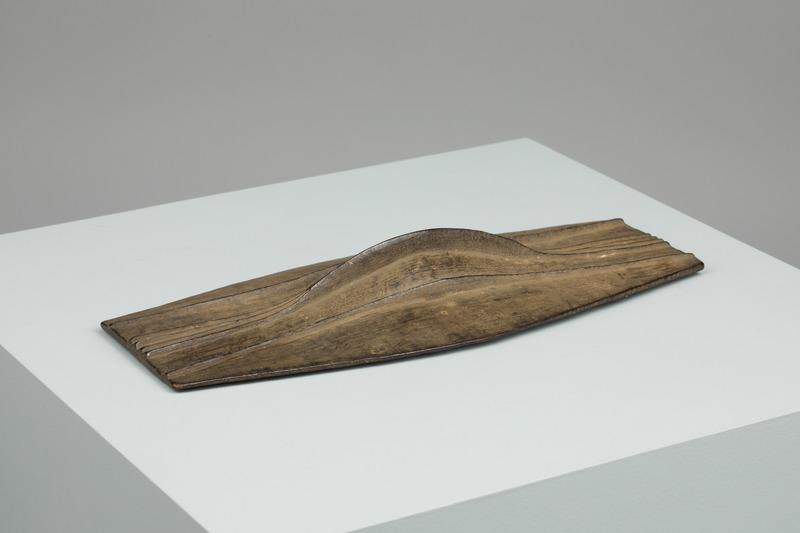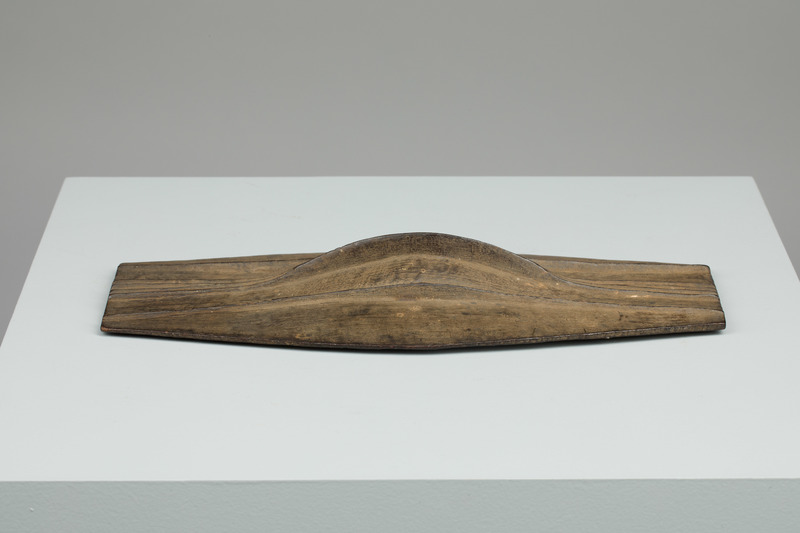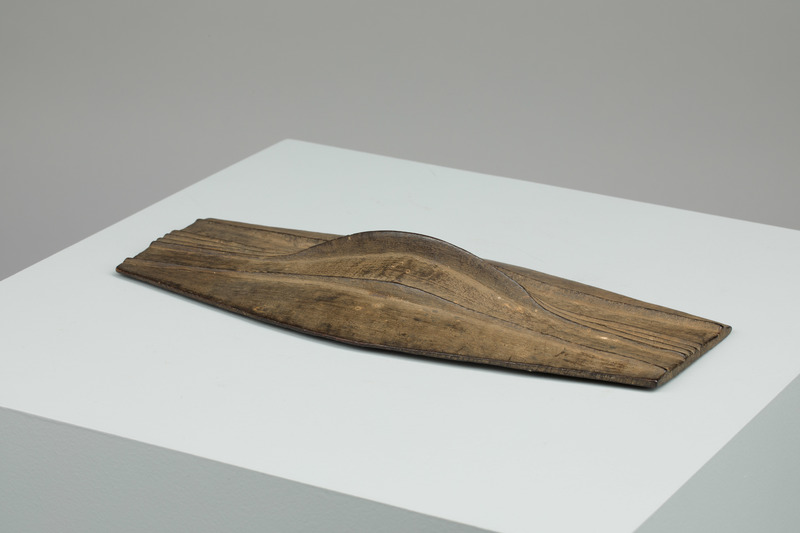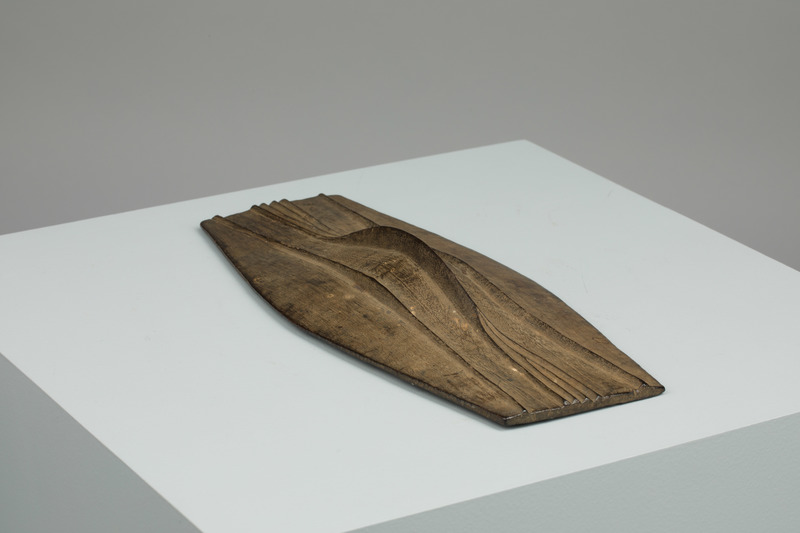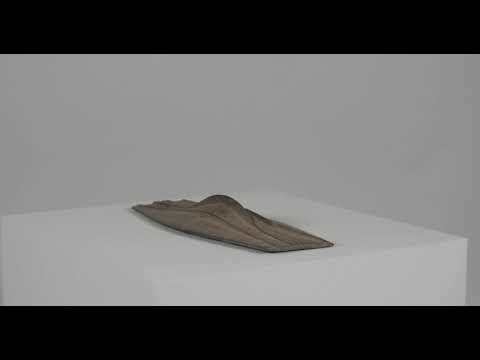Catalogue 51
Anklet
Nkundu people, Democratic Republic of the Congo
Mid-20th century
Copper alloy; 4 1/8 x 5 13/16 x 6 1/8 inches (10.5 x 14.7 x 15.5 cm)
National Museum of African Art, Smithsonian Institution
Gift of Allen Clayton Davis
2002-22-18
Anklet Mold
Nkutshu people, Democratic Republic of the Congo
20th century
Wood; 11 5/8 x 5 1/8 x 1 3/4 inches (29.5 x 13 x 4.5 cm)
Collection of Allen and Barbara Davis
Anklet
Nkutshu people, Democratic Republic of the Congo
20th century
Brass; 7 7/8 x 4 15/16 x 5 1/2 inches (20 x 12.5 x 14 cm)
Collection of Allen and Barbara Davis
Among the Mongo-speaking peoples of northwestern Democratic Republic of the Congo, massive, weighty jewelry served as an indicator of status and wealth. This anklet from the Nkundu area is one such example. The material used, a copper alloy, was rare in precolonial times and probably came from the Shaba or Katanga copper mining centers many hundreds of miles to the southeast. To wear such a heavy adornment around one’s ankle probably meant its owner had the means to avoid physical labor. It was created by pouring molten metal directly into an open mold on the ground and then bending the cooling metal into a shape to fit around the wearer’s ankle, before finally burnishing the anklet’s surface (see the collection of the Smithsonian National Museum of African Art). For other examples of such anklets from the neighboring Ekonda peoples, see Schaedler (1997, 293).
How such a casting is achieved is aptly illustrated by the other pair of Nkutshu objects, which include both the anklet and the type of mold that would have been used to create it. The process involved placing a cushion of banana-stalk fibers in a concave wooden holder and then putting moistened sand inside. The wooden mold would then be then pressed into the sand to hollow out the negative space in the shape of the anklet, before molten brass was poured into the open mold. When the brass had cooled, the resulting anklet would be emptied out of the mold and pounded into its circular final form while the metal was still warm (Maquet 1965, 12–13, and plates 1-8 showing Kutu smiths making such anklets). Because the cuprous material was rare, such anklets functioned both as jewelry and as a form of currency.
WJD
References
Maquet, Emma. 1965. Outils de Forge du Congo, du Rwanda et du Burundi dans les Collections du Musee Royal de l’Afrique centrale a Tervuren. Tervuren, Belgium: Musée Royal de l’Afrique centrale.
Schaedler, Karl Ferdinand. 1997. Earth and Ore: 2500 Years of African Art in Terra-cotta and Metal. Munich: Panterra.

